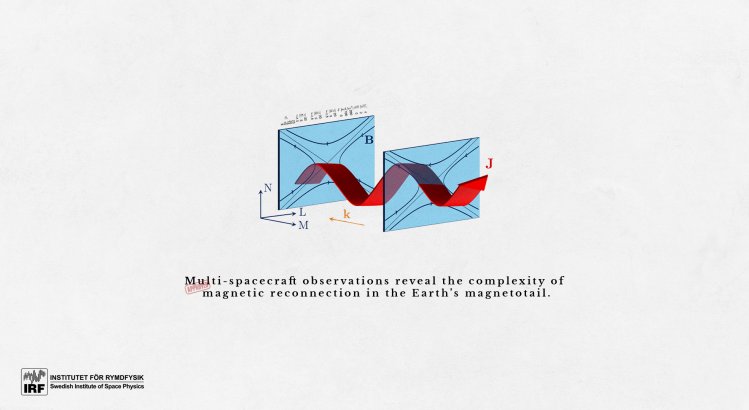
Physical Review Letter accepterar artikel från IRF.
Forskare från IRF Uppsala har fått en artikel accepterad i PRL (Physical Review Letter) som anses vara en av världens högst ansedda tidskrifter inom fysik.
Artikeln undersöker behovet av att beskriva magnetisk rekonnektion i tre dimensioner istället för de traditionella tvådimensionella stationära modellerna.
Mer djupgående information på engelska:
The article investigates the relationship between plasma current sheet instabilities and magnetic reconnection at the electron scales in the Earth’s magnetotail. The results of the study indicate the need for adopting a 3D description of the magnetic reconnection process, going beyond the two-dimensional and steady-state conception of reconnection that is commonly adopted.
The study employs multi-point in situ observations by the four NASA Magnetospheric Multiscale (MMS)spacecraft and advanced numerical modelling and it is carried in collaboration with members of the MMS team and University of Wisconsin Madison.
Magnetic reconnection is a fundamental process that naturally occurs in a diverse variety of environments in space and astrophysical plasmas and it underlies physical phenomena as coronal mass ejections and aurora. Magnetic reconnection efficiently converts the energy stored in magnetic field to the particles of the plasmas, resulting in particle acceleration and plasma heating. The explosive energy conversion associated with reconnection affects large volumes but the reconnection process is initiated in a minuscule region called the electron diffusion region. The four MMS spacecraft have been launched in 2015 and have allowed for the first time the investigation of the small and elusive – yet critical – electron diffusion region.
In this study, the researchers of IRF focused on the interplay between plasma waves and instabilities and the diffusion region of magnetic reconnection in the Earth’s magnetotail current sheet. During the crossing of the electron diffusion region, MMS observed unexpected electric field, electron velocity, and magnetic field oscillations that do not fit with the laminar, two-dimensional and steady-state picture of reconnection.
‘’These observations were quite surprising for us and they aroused our curiosity. By analyzing high resolution data from the four MMS spacecraft and comparing them to numerical simulations we found out that these unexpected observations could be explained by the presence of a current sheet instability perturbing the diffusion region crossing.’’ says Giulia Cozzani, postdoctoral researcher.
This instability propagates along the current direction. Consequently, a 3D description is needed to understand the observed perturbed diffusion region crossing.
These results advance our understanding of the electron diffusion region by shedding light on the interplay between the magnetic reconnection process and current sheet instabilities. These findings highlight the need of developing models which overcome the two-dimensional and steady-state conception of reconnection and pave the way for future advancement in the description of the reconnection process.
The article ‘’Structure of a perturbed magnetic reconnection electron-diffusion region in the Earth’s magnetotail’’ is available online at the following link:
https://journals.aps.org/prl/a…
Authors:
G. Cozzani1,*, Yu. V. Khotyaintsev1, D. B. Graham1, J. Egedal2, M. André1, A. Vaivads3, A. Alexandrova4, O. Le Contel4, R. Nakamura5, S. A. Fuselier6,7, C. T. Russell8, and J. L. Burch6
